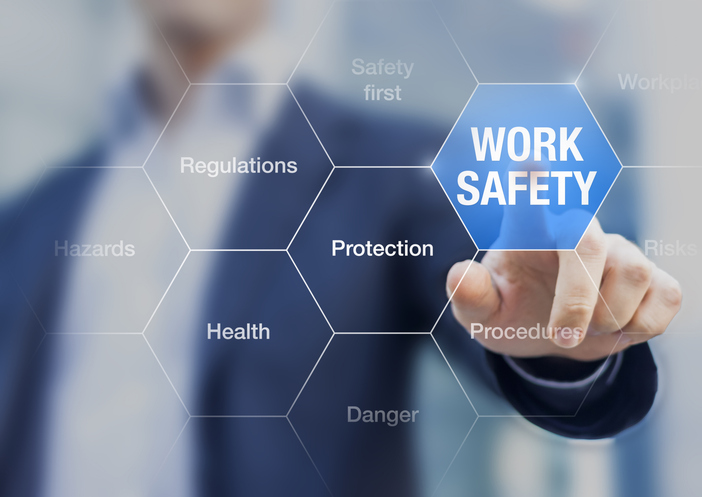Innovative Tools and Resources for California Workplace Violence Prevention Success
Innovative Tools and Resources for California Workplace Violence Prevention Success
Blog Article
The Role of Worker Training and Awareness in Enhancing Office Physical Violence Prevention Initiatives Across Different Industries
The combination of staff member training and recognition right into workplace physical violence avoidance campaigns is significantly identified as a basic element of business safety across varied industries. By executing targeted training programs, organizations can effectively equip their labor force to determine and resolve prospective hazards prior to they rise. Nevertheless, the effectiveness of these initiatives typically depends upon numerous essential factors that differ by industry, elevating crucial questions concerning the flexibility of training approaches and their real-world effect. Recognizing these subtleties might disclose methods that can considerably boost safety procedures and employee self-confidence in risky settings.
Value of Training Programs
In today's vibrant workplace, the significance of training programs can not be overstated, specifically in the context of office violence prevention. These programs function as a fundamental element in cultivating a safe and protected work environment society. By gearing up employees with the knowledge and skills essential to determine, alleviate, and reply to potential dangers, organizations can promote an environment that prioritizes safety and security and wellness.
Efficient training programs do even more than merely instruct; they encourage staff members to identify indication of physical violence, comprehend the protocols for reporting events, and establish techniques to de-escalate possible disputes. They impart a feeling of cumulative duty among team, urging positive involvement in keeping a safe workplace.
Financial investment in training not only boosts staff member awareness yet also shows a company's commitment to securing its workforce. This proactive approach can bring about minimized incidents of office violence, lower absence, and enhanced worker spirits. Inevitably, detailed training programs are indispensable to establishing a resistant business society that values safety and advertises a healthy workplace, therefore reducing the risk of physical violence and its linked repercussions.
Trick Parts of Effective Awareness
An extensive understanding program encompasses a number of vital components that are vital for properly protecting against work environment physical violence. Clear interaction of plans and treatments connected to workplace violence is crucial. Employees must be informed about the company's position on physical violence and the details methods in area for reporting occurrences.
2nd, training sessions ought to incorporate practical situations that employees might experience. This sensible technique assists workers acknowledge warning indications of potential violence and outfits them with the necessary abilities to de-escalate stressful circumstances. Third, fostering an encouraging office society is crucial; employees need to really feel empowered to speak up without concern of retaliation.
In addition, continuous education and learning is crucial to maintain awareness fresh and pertinent. Routine correspondence course and updates on arising risks can enhance staff members' vigilance and readiness. Incorporating responses systems allows staff members to share their experiences and insights, which can lead to continual enhancement of awareness efforts. By incorporating these elements, organizations can create a durable framework for protecting against work environment physical violence, inevitably contributing to a safer and much more efficient atmosphere for all employees.
Industry-Specific Training Approaches
Reliable work environment physical violence avoidance training must be tailored to the distinct difficulties and dangers dealt with by particular sectors. Healthcare settings require training that attends to the high probability of experiences with aggressive clients or visitors. Programs need to concentrate on de-escalation methods, acknowledging indication of possible violence, and making sure personnel recognize the relevance of reporting events.
On the other hand, retail settings might encounter various dangers, such as robbery or customer conflicts. Training in these settings should stress situational awareness, action methods during emergencies, and the importance of safeguarding money and valuables.
Production and building markets offer their own dangers, commonly connected with interpersonal conflicts or unsafe working problems. Training in these markets ought to include techniques for problem resolution, promoting a society of security, and motivating open communication among staff members.
Furthermore, company offices may need training fixated protecting against harassment and bullying, fostering a respectful work environment society, and carrying out clear reporting mechanisms. Each industry must not just recognize its particular susceptabilities but also adjust training products to resonate with the reference labor force properly, guaranteeing that staff members really feel complete and equipped to handle prospective fierce circumstances.
Determining Educating Performance
Examining the effect of workplace physical violence prevention training is important for making sure that employees are appropriately prepared to manage prospective hazards. Pre- and post-training studies can determine changes in employee knowledge, attitudes, and behaviors worrying workplace physical violence.
Furthermore, practical assessments, such as role-playing situations or simulations, can supply insights into just how well staff members apply learned abilities in real-life situations. Monitoring incident reports before and after training can likewise serve as a sign of efficiency, as a reduction in occurrences might mirror better employee preparedness.
Furthermore, feedback from individuals need to be systematically gathered to identify locations for improvement in training content and distribution. Conducting follow-up examinations at regular intervals helps suffer recognition and enhances training concepts with time - california workplace violence prevention. By using a detailed approach to gauging training effectiveness, organizations can guarantee that their office physical violence prevention campaigns promote a safer atmosphere and enhance general worker wellness
Structure a Culture of Security

Training plays a pivotal duty in this social shift. Routine, extensive training sessions enlighten workers regarding identifying caution indicators of work environment violence and the ideal feedbacks. Additionally, urging open interaction permits employees to voice issues without worry of retaliation, advertising collective responsibility for safety.
Furthermore, incorporating safety and security into day-to-day procedures guarantees that it becomes a shared value instead of a simple compliance concern. This consists of normal security drills, updates on plans, and feedback devices that involve staff members in safety and security conversations and enhancements.
Inevitably, a durable culture of security not only minimizes the threats of work environment physical violence however also boosts staff member morale and productivity. By cultivating an environment where safety and security is a fundamental priority, organizations can produce resistant workplaces that support both specific well-being and cumulative success.
Conclusion
Finally, staff member training and understanding are vital parts in the avoidance of office physical violence across various industries. Efficient training programs, customized to specific market demands, improve employees' capacity to identify and respond to prospective dangers. By implementing thorough awareness approaches and cultivating a culture of safety, organizations can considerably minimize events of workplace physical violence and improve total worker morale. Dedication to continuous training and assessment ensures continual efficiency and adaptability in addressing arising obstacles within the office environment.

Normal, extensive my sources training sessions inform workers about recognizing warning signs of workplace violence and the ideal actions.In final thought, staff member training and awareness are important components in the prevention of work environment physical violence throughout different industries.
Report this page